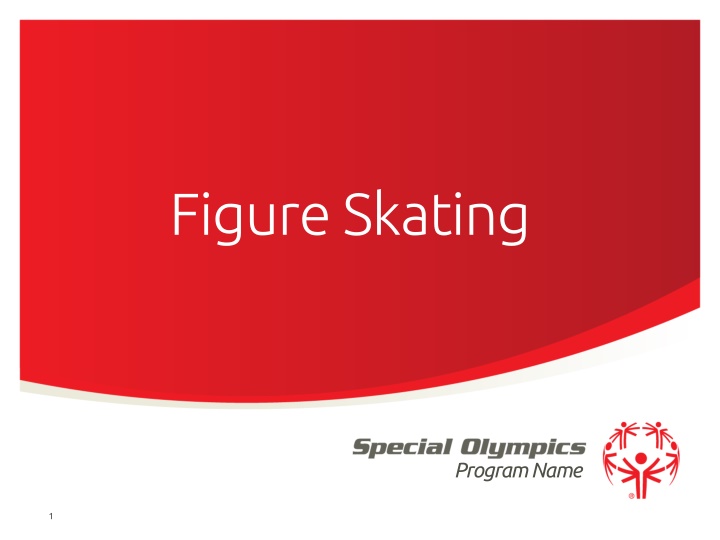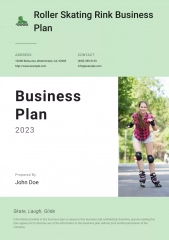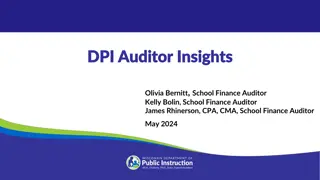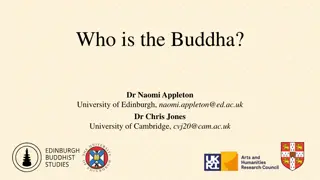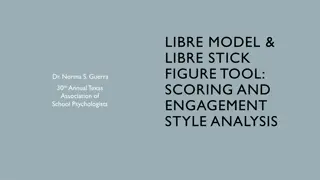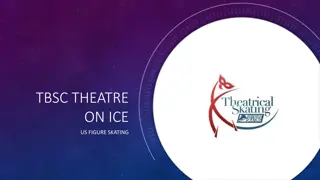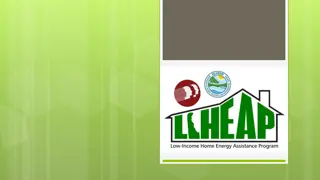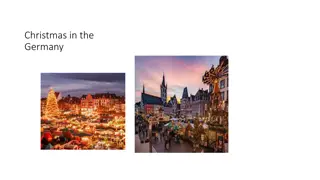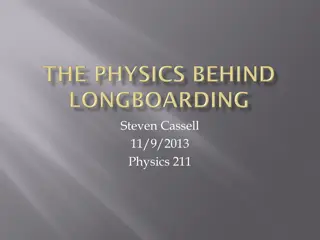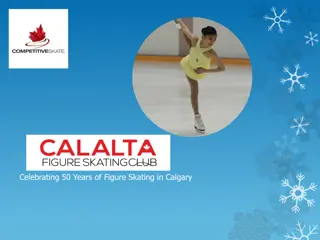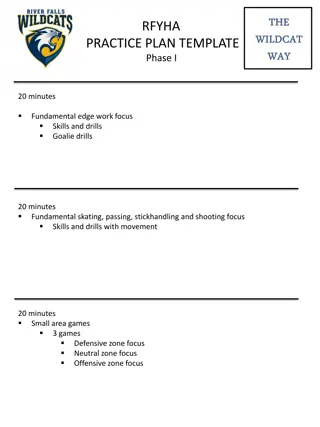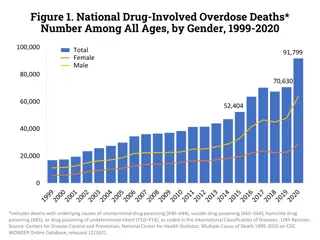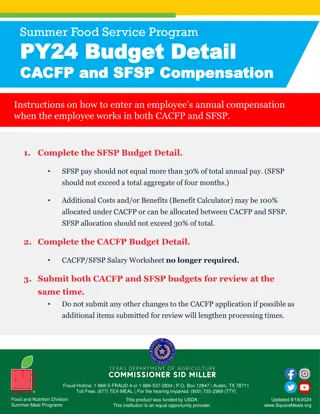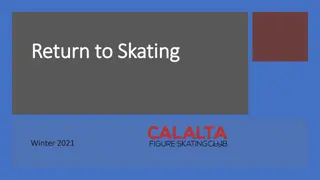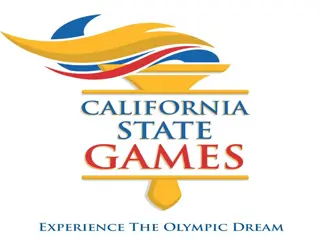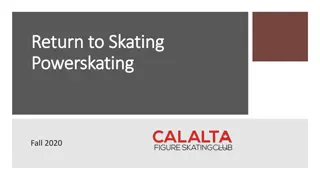Figure Skating Program Details and Guidelines
This comprehensive content includes information about figure skating programs, Special Olympics events, recommended events for different ability levels, and uniform guidelines. It covers details such as the season, culminating events, events offered, and recommended levels for skaters. The content also outlines uniform requirements for female figure skaters in both preliminary and final rounds.
Download Presentation

Please find below an Image/Link to download the presentation.
The content on the website is provided AS IS for your information and personal use only. It may not be sold, licensed, or shared on other websites without obtaining consent from the author.If you encounter any issues during the download, it is possible that the publisher has removed the file from their server.
You are allowed to download the files provided on this website for personal or commercial use, subject to the condition that they are used lawfully. All files are the property of their respective owners.
The content on the website is provided AS IS for your information and personal use only. It may not be sold, licensed, or shared on other websites without obtaining consent from the author.
E N D
Presentation Transcript
Figure Skating Program Name 1
The Basics Sport season: December-February Culminating State Event: State Winter Games 2 / Special Olympics Program Name
Events Offered Events Offered Singles Freestyle Level: I, II, III, IV, V, VI Singles Compulsory Elements: Level I, II, III, IV, V, VI Pairs Compulsory Elements: Level I Pairs Freestyle Level I Ice Dancing: Level I, II, III Unified Pairs Compulsory Elements: Level I Unified Pairs Freestyle: Level I Unified Ice Dancing: Level I, II, III 3 / Special Olympics Program Name
Recommended Events for Appropriate Ability Levels 1. Level I skaters are invited to enter Level I Compulsory and the Level I Freestyle. They may also register for the Level I Ice Dancing. 2. Level II skaters are invited to enter Level II Compulsory and Level II Freestyle. They may also register for the Level I or Ice Dancing. 3. Level III skaters are invited to enter Level III Compulsory and Level III Freestyle. They may also register for the Level I Ice Dancing or Level IV Compulsory and Level IV Freestyle. 4
Recommended Events for Appropriate Ability Levels Cont. 4. Level IV skaters are invited to enter in Level IV Compulsory and Level IV Freestyle. 5. **All athletes are eligible to enter the exhibition events, a special award will be given NOTE: Athletes who cannot complete the event to the satisfaction (ability appropriate) of the Games Committee member during the preliminary round will be moved to a lower event. Athletes who cannot complete the event during competition will be disqualified. 5
Uniform Guidelines and Equipment Program Name 6
Uniform Guidelines and Equipment 1. In the preliminary round, the female figure skating uniform should be a simple, fitted figure skating dress, skirt or jumper with a turtleneck and/or sweater. Exceptions will be made by the discretion of the Games Committee. 2. In the final round, the female figure skating uniform may have beading, sequins, and/or lace, in good taste with approval of professional coach as long as decoration does not interfere with skating. No props may be used. 7
Uniform Guidelines and Equipment Cont. 3. Female skaters should wear sheer-to-waist pantyhose or tights, and undergarments should not be visible. 4. In the preliminary round, the male figure skating uniform should be trousers, a long-sleeved sweater, and/or turtleneck. Sweat pants or tights are not acceptable. 5. In the final round, the male uniform should be simple fitted pants and turtleneck/sweater or a jumpsuit. 8
Uniform Guidelines and Equipment Cont. 6. Material of any color with simple decoration is acceptable as long as decoration does not interfere with skating. 7. Dress should enhance and not detract from the skater's technical proficiency. 8. No props. 9
Uniform Guidelines and Equipment Cont. 9. Skates should be clean and polished with laces tucked in. Hockey skates or speed skates shall not be used. 10. Jewelry and denim may not be worn during competition or practice. 11.Headwear for religious or medical reasons are acceptable but must be brought to the attention of the Games Director prior to competition 10
Equipment/Facilities Program Name 11
Equipment/Facilities 1. A rectangular rink, which measures at least 26 x 56 meters (85'TOC185') is required. 2. A warming area and changing facility should be available for the athletes. 3. A sound system for musical accompaniment is required. 4. Provide music on a CD at venue site. 12
General Rules Program Name 13
General Rules 1. Athletes will be awarded one medal each for the compulsory and freestyle events. 2. Each athlete participating at the Games may only compete in one sport. Each athlete may participate in three events within the chosen sport category. 3. Special attention should be directed to recommended events for the athlete's ability level. 14
General Rules Cont. 4. Unified can consist of two males, two females, or male and female. 5. Unified will be one athlete and one Unified Partner. 6. Athlete and partners may register for two events with special medals awarded. 15
General Rules Cont. 7. Pairs will be two athletes, with the team being one male and one female, two males or two females. 8. There will be a minimum of three and a maximum of nine judges (one of whom will be a head judge). The number of judges must be an odd number. 16
Level One Program Name 17
Compulsory Element Group 1. Skaters shall skate all of the following elements in isolation. 2. After all skaters have completed one element, the next element will be performed. 3. Each skater has two opportunities to perform the elements. I. Forward swizzles for a distance of 10 meters. II. Backward swizzles for a distance of 10 meters. III. One-foot forward snowplow stop (left or right). 18
Level I Freestyle Program 1. Skater may start program at any spot on ice surface. 2. Judging and timing will begin when skater commences to skate. 19
Level I Freestyle Program Cont. 3. This is a Beginning Freestyle program. A well balanced program with elements selected from Badges 1-5 with emphasis on balance, glide and beginning moves done well that includes a selection of the following elements only and max. 1 jump (2-foot jump in place or movement) is allowed: 20
Skills list I. Forward march or stroking II. Backward wiggle or march III. Forward swizzles IV. Backward swizzles V. Forward two-foot glide VI. Backward two-foot glide VII. Forward gliding dip VIII. Backward gliding dip IX. Forward one-foot glide left and right (length of the body) X. Two-foot jump in place or moving XI. One-foot forward snowplow stop (left or right) XII. Forward two-foot curves left and right XIII. Two-foot turn front to back on the spot 21
Level I Freestyle Program Cont. 4. The skills may be performed in any order. 5. The skater is not required to perform a set number of skills, however, the skater will be judged on the quality of the performance and the content. 6. The program must be performed to music, instrumental or vocal. 22
Level I Freestyle Program Cont. 7. The program will not exceed a time limit of one minute, plus or minus ten seconds. 8. No elements above Badge 5 are to be included in the program. 9. A mandatory 0.2- point deduction will be made for each added element. 23
Level II Program Name 24
Eligibility A skater competing in Level II must be able to complete the skills required in Badges 1-9 but no higher. 25 / Special Olympics Program Name
Level II Compulsory Element Group 1. Skaters shall skate the first eight elements in succession. 2. The skater has two opportunities to perform the elements. After completion of the first eight elements the skater will perform the ninth element. 3. Skater starts at one end of the rink (or on the red goal line). 4. Skater begins when so instructed by the referee. 26
Level II Compulsory Element Group Cont. 5. Skater skates forward using stroking motion (not swizzles, a 0.2 deduction will be made for swizzles) to the first blue line, or a point approximately one- third the length of the skating area. 6. At the first blue line (or one-third the length of the ice), skater performs a forward to backward two- foot turn. 27
Level II Compulsory Element Group Cont. 7. Upon completion of the turn, the skater skates backward stroking (not swizzles, a 0.2 deduction will be made for swizzles) to the second blue line or a point approximately two-thirds the length of the skating area. 8. At second blue line (or two-thirds the length of the ice), skater performs a backward to forward two- foot turn 28
Level II Compulsory Element Group Cont. 9. Upon completion of the turn, the skater skates forward using stroke motion to the finish line (red goal line at the end of the rink). 10.At the finish line (red line), the skater performs a T- stop. 11.Forward crossovers around the hockey circles in figure eight pattern. One pattern clockwise and one pattern counterclockwise (with no stop between), minimum of five crossovers per circle. 29
Level II Freestyle Program Program Name 30
Level II Freestyle Program 1. Skater may start program at any spot on ice surface. 2. Judging and timing will begin when skater commences skating. 3. This is an Advanced Beginner Freestyle program. 31
Level II Freestyle Program Cont. 4. A well-balanced program with elements selected from Badges 1-9 with emphasis on Glide and Turns and includes all elements listed in Level I as well as a selection of the following elements only and max. 2 single jumps (2-foot jump in place or movement and Bunny hop) are allowed: 32
Skills I. Consecutive forward one-foot swizzles (left foot and right foot) II. Consecutive backward one-foot swizzles (left foot and right foot) III. Backward one-foot glide length of body (left foot and right foot) IV. Bunny hop T-stop left or right Backward stroking V. 10 Two-foot turn gliding forward to a backward VI. Two-foot turn gliding backwards to forward VII. Forward pivot Forward two-foot spin VIII. Forward two-foot turn on a circle (two-foot three-turn) left and right IX. Forward outside three-turn (left and right) X. Consecutive forward crossovers (left and right) XI. Forward outside edge XII. Forward inside edge XIII. Forward lunge or Shoot the Duck (at any depth) 33
Level II Freestyle Program Cont. 5. The skills may be performed in any order. 6. The skater is not required to perform a set number of skills, however, the skater will be judged on the quality of the performance and the content. 7. The program must be performed to music, instrumental or vocal. 34
Level II Freestyle Program Cont. 8. The program will not exceed a time limit of one and one-half (1 1/2) minutes, plus or minus ten (10) seconds. 9. No elements above Badge 9 are to be included in the program. A mandatory 0.2 deduction will be made for each added element 35
Level III Program Name 36
Eligibility A skater competing in Level III must be able to complete the skills required in Badges 1-12 but no higher 37
Level III Compulsory Element Group 1. Skaters shall skate all of the following elements in isolation. 2. The skater has two opportunities to perform the elements; the attempt which produces the highest aggregate score from the judges will be used towards the skater s final score, the other score will be discarded. 38
Level III Compulsory Element Group Cont. 3. Skater starts elements at point designated by the referee. 4. Skater begins elements when so instructed by the referee. 5. Skater must perform the following skills: 6. Outside and inside forward edges shall be skated 39
Level III Compulsory Element Group Cont. 7. The skating edges shall be short strokes with correct take-offs from one foot to the other. 8. Four consecutive outside edges and four consecutive inside edges beginning with the right foot and alternating to the left foot shall be skated across the width of the rink 40
Level III Compulsory Element Group Cont. 9. The skater shall execute a Forward Outside Three Turn on the right foot and a Forward Outside Three Turn on the left foot. This skill must be performed twice. 10.The competitor shall approach, execute, and exit each Three Turn on one skate. The skate which the Three Turn is to be executed upon shall be the only skate to touch the ice one meter prior to, during, and one meter after the execution of each Three Turn. 41
Level III Compulsory Element Group Cont. 11.The skater shall execute a right forward inside edge to left backward inside edge open Mohawk. 12.The free leg should be extended before and after the turn. 42
Level III Freestyle Program Program Name 43
Level III Freestyle Program 1. Skater may start program at any spot on ice surface. 2. Judging and timing will begin when skater commences skating. 44
Level III Freestyle Program Cont. 3. This is an Intermediate Level Freestyle program. A well-balanced program with elements selected from Badges 1-12 with emphasis on Flow, Carriage and a slightly more advance skill level that includes all elements listed in Level I and Level II as well as a selection of the following elements only and a max. of 3 single jumps (2- foot jump in place or movement, Bunny hop, Waltz jump, Salchow and Toe Loop): 45
Skills I. Waltz jump Forward spiral Backward spiral II. One foot spin (minimum of three revolutions in the upright position only) III. Consecutive backwards crossovers (left and right) IV. Consecutive forward outside edges V. Consecutive forward inside edges VI. Consecutive backwards outside edges VII. Consecutive backwards inside edges VIII. Forward inside three-turn (left and right) IX. Forward inside Mohawk Simpler footwork (Mohawk step sequence, Waltz three- step sequence, etc.) X. Field moves Salchow Toe Loop Hockey Stop 46
Level III Freestyle Program Cont. 4. The skills may be performed in any order. 5. The skater is not required to perform a set number of skills, however, the skater will be judged on the quality of the performance and the content. 6. The program must be performed music, instrumental or vocal. 47
Level III Freestyle Program Cont. 7. The program will not exceed a time limit of two (2) minutes, plus or minus (10) seconds. 8. Any spin beyond a one-foot spin or jumps other than those listed above will receive a mandatory 0.2 deduction. 48
Level IV Program Name 49
Level IV Compulsory Element Group 1. Outside and inside backward edges shall be skated. 2. The skating edges shall be short strokes with correct take-offs from one foot to the other. 3. Four consecutive outside edges and four consecutive inside edges beginning with the right foot and alternating to the left foot shall be skated across the width of the rink. 50
